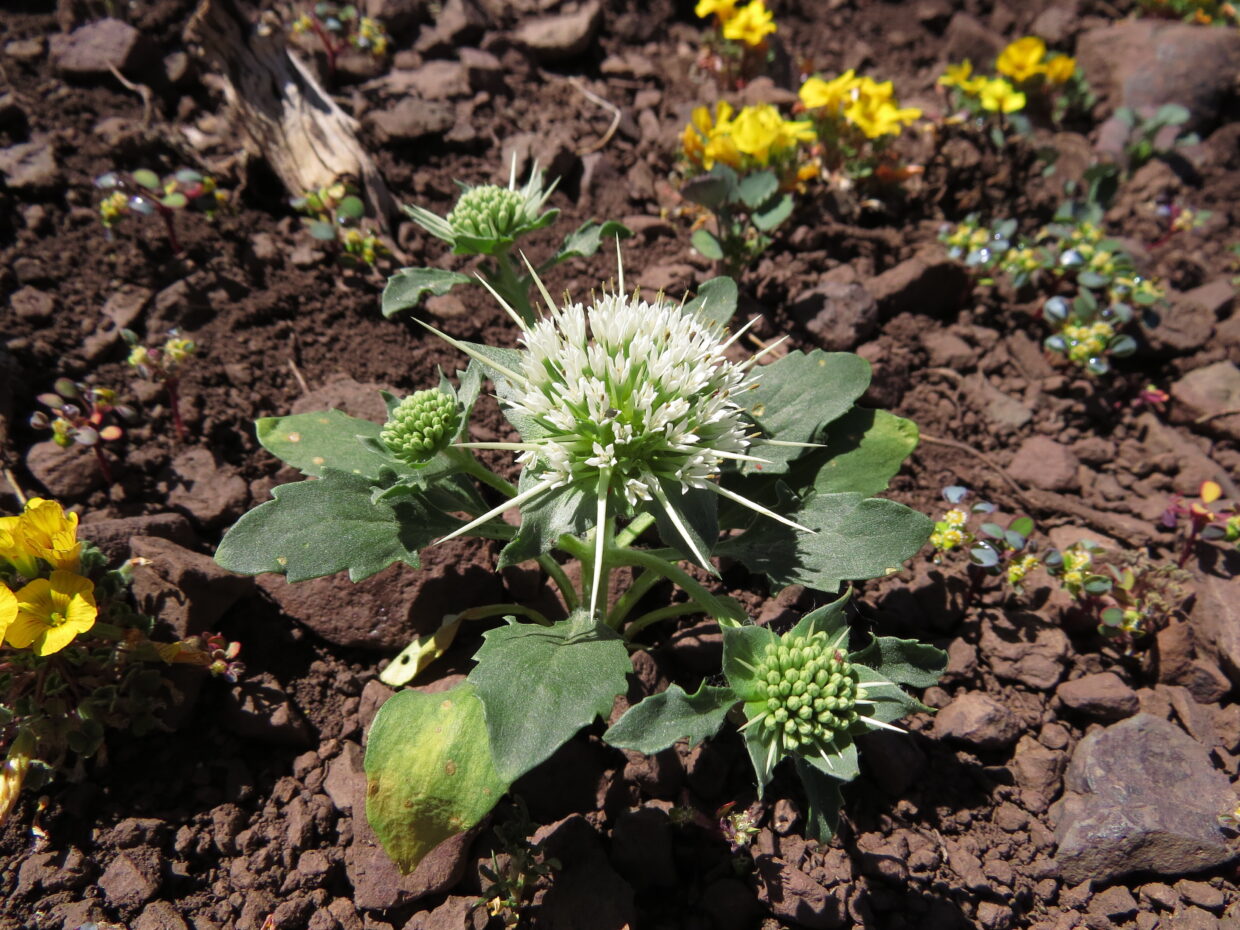Place of Publication
Taxon 70: 612 (2021)
Type citation
CHILE. Prov. Santiago, date not indicated, C. Gay1066 (holotype: P; isotypes: BM 000947744, K 000588755, photo of K at SI!, K000588756, photo of K at SI!, LIL 281133!)
Synonyms
References
-
Gay (1848c)
Gay, C. 1848. Historia física y política de Chile: Botánica, vol. 3(3):241-384. Paris & Chile (Museo Historia Natural de Santiago)
-
Pontiroli (1993)
Pontiroli, A 1963. Calyceraceae. Pp. 537–545 in Flora de la provincial Jujuy tomo 12, parte 9, ed. A. L. Cabrera. Buenos Aires: Colección Científica del INTA.
-
Zanotti & Pozner (2008)
Zanotti, C.A. and Pozner, R.E. 2008. Calyceraceae, Pp. 1844 –1853 in Catálogo de las Plantas Vasculares del Cono Sur de América del Sur: Argentina, Sur de Brasil (Paraná, Santa Catarina y Rio Grande do Sul), Chile, Paraguay y Uruguay vol 2. eds. F. O. Zuloaga, O. Morrone and M. J. Belgrano. Monographs in Systematic Botany from the Missouri Botanical Garden. St Louis: Missouri Botanical Garden Press.
-
Denham et al. (2014)
Denham, S.S. , Gallo, L.Z and Pozner, I.E. 2014. Morphology and Taxonomic Revision of Calycera. Systematic Botany 39(4):1-13
-
Pozner et al. (2021)
Pozner, R E , Johnson, L A and Denham, S S 2021. Evolution of flower morphology and a natural re-arrangement of Calyceraceae. Taxon 70: 589-619
Iconography
- Denham et al. (2014): fig. 7
- Hoffmann et al. (1998b): pag. 183(2)
Regions
Coquimbo, Metropolitana and Del General Libertador Bernardo O'Higgins
Distribution and habitat
Mountain ranges of Coquimbo, Santiago and Colchagua from 2000 to 2500 m above sea level. It is sometimes found in open pastures, steep mountain slopes, roadsides and other disturbed areas in the Andes.
Descriptions
- Denham et al. (2014)
Habit
Perennial herb, about 15 cm tall. Flowering December to March.
Key characteristics
Calycera eryngioides is easily recognized by its sprawling growth form, five broad (2-3.5 cm wide), green, fleshy floral bracts. C. calcitrapa is similar but it has a more robust habit and leaves with dentate, pointed margins (DeVore, 1994)
Notes
Although this species has been recorded for Argentina (Pontiroli, 1963) there is no herbarium specimen cited to support that it grows outside of Chile. The specimen Philippi s. n., from Argentina, cited in Zanotti and Pozner (2008) is a misidentification (Denham et al,. 2014).





